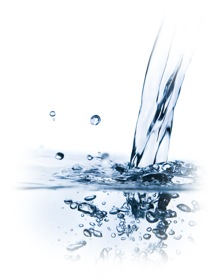Balneotherapy and Hydrotherapy

- baths (full /partial immersion; single/both sides, increasing/decreasing water temperature, contrast bathing).
- showers with mechanical and thermal stimuli.
- packs, compresses, body wraps (enclosing more than 50% of the body).
- sauna baths: a dry, Turkish bath at a high temperature (80 – 90°), very low humidity and high oxygen content. Under these conditions the sauna regulates the cardiovascular system without subjecting it to excessive stress, and also strengthens the immune system.
The effects of Balneotherapy and Hydrotherapy
Heat regulation:
trains the thermoregulatory system and compensates for circulatory disorders.
Nervous system:
improves nerve functions, trains autonomic reflexes, improves trophicity, improves tonicity of the autonomic system (heat is vagotropic, spasmolytic and analgesic).
Internal secretions:
reduces increased hormone production or increases production in glands that are failing.
Metabolism:
lowers any hypertoniocity of the sympathetic nervous system; promotes transdermal purging of various substances ("detoxification").
Circulation:
improves peripheral blood circulation; reduces cardiac stress
Breathing:
favourably influences pain-induced respiratory dysfunctions; eliminates respiratory inhibitors, relaxes spastic bronchial muscles; cold stimuli increase both breathing frequency and tidal air volume.
Tissue:
improves tissue and muscle tone, elasticity, circulation, heat transfer, cell nutrition and lymph circulation. Disorders of the connective-tissue system are positively influenced by a major hydrotherapy programme.
Dermal functions:
hydrotherapy improves dermal nutrition (trophism) and thus has a beneficial effect on many skin functions, such as: immune state, intermediate metabolism, discharge of toxins and metabolites.
Hydroelectric baths ("Stanger" or four-cell baths)
depending on the indication, specific electrical currents are conducted through the body, or individual parts thereof, via water and in so doing, treat the respective area. Depending on the form of current, medication can also be supplied to the body (Iontophoresis).
Note: polarity depends on medical indications:
Pain, hypertonicity:
anode (calming, pain relieving) on the affected side.
Muscular hypotonicity, paresis:
cathode (stimulating) on the affected side
Disorders of the central motor system:
anode at head, cathode at feet.
General effect:
increases peripheral blood flow, relieves pain, reduces or increases muscle tone (normotonicity), activates metabolism, stimulates the immune system, medication can be delivered iontophoretically.
Indications:
Hyper- and hypotonicity of the muscle system; paresis; spasticity, arterial circulatory disturbances (not polarity dependent), respiratory tract infections.
Carbon dioxide baths
In a carbon dioxide bath, carbon dioxide (CO2) is passed through the water or released into the water from an added salt. Carbon dioxide inhibits the skin's cold receptors and stimulates the heat receptors, induces peripheral vasodilation and a corresponding lowering of blood pressure, and creates a feeling of peripheral warmth. This latter factor allows low water temperatures to be used.
General effect:
reduction in blood pressure as a result of peripheral vasodilation.
Indications:
hypertonicity; arterial circulatory dysfunction; dysfunction of the autonomic nervous system, psychosomatic disorders, general nervousness.
Paraffin partial baths
are used in the treatment of orthopaedic, traumatological and medical disorders.
General effects:
improve blood flow, stimulate the immune system, reduce muscle tone, spasmolysis, relieve pain, generally relax.
Reflexible response:
effect on inner organs that are supplied by the same segment.
Activation
of the (intact) lymph system.
"Fango" packs
like paraffin baths, are used in the treatment of orthopaedic, traumatological and medical disorders. The packs are made using a high-quality mineral mud that deposits around volcanic springs. Because of the high fraction of salicylic and humic acid in the mineral material, "fango" packs are antipyretic, analgesic, antiphlogistic and keratolytic.
Indications:
- degenerative diseases of the vertebral column and joints; chronic rheumatic disorders
- muscular hypertonicity; swelling accompanying physical stressing of soft tissue; following trauma to, or operations on the locomotor system
- functional arteriopathy
- diseases of the internal organs, e.g. liver and bile dysfunction; constipation; menstrual pains, infectious respiratory disease
- stress requiring calming of general nervousness
- beneficial supportive treatment for massage and physiotherapeutic measures
Other heat packs and wraps
are available. Their effects are comparable to those achieved using fango packs, and they are used to treat a similar range of ailments. Similar results can also be achieved by the Kneipp water-based therapy techniques.

 DE
DE
 FR
FR